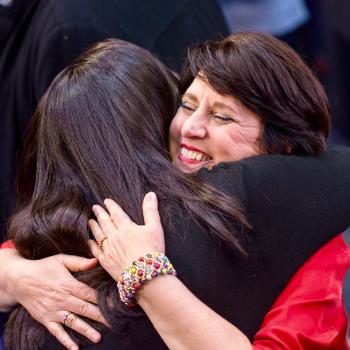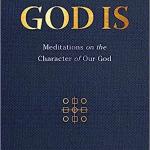Over at The Atlantic last week, Abigail Rine debated the pros and cons of abandoning the word “feminist” (a term I defended at some length a few months ago). When a label can’t shake its negative connotations, she asks, is it time to give up on the label? Or to fight for it?
Christians wrestling with gender issues are asking the same kinds of questions about the labels we’ve chosen. Within evangelicalism today, you’ll find two main groups: those who identify as “complementarian” and those who call themselves “egalitarian.” Complementarians believe that men and women were created equal, but different, and that in their differences they reflect specific truths about Jesus and the church. The word was coined by a group of scholars in the 1970s who were responding to 2nd wave feminism. Complementarians believe that there are some positions of authority within the church that, by God’s design, only men may fill. Egalitarians also believe that men and women were created equal, but different; however, they do not believe that women should be restricted from holding any roles of authority within the church.
Beyond those very basic definitions, you’ll find a dizzying array of beliefs and practices labeled as complementarian or egalitarian, with a fair amount of disagreement even within each group regarding what the Bible teaches about gender. And some people think the complementarian movement is in the middle of a notable transition in how it defines itself.
Last month, writer and blogger Wendy Alsup described what she calls a “new wave” of complementarianism, a way that is “neither egalitarian or hard core complementarian/patriarchy.” She lists eight characteristics of the movement:
1. Belief in the trustworthiness of the Bible.
2. A belief that the Bible interprets itself.
3. A respect for Church history and creeds.
4. Strong disagreement for Susan Foh’s interpretation of Genesis 3:16.
5. Identifying with some aspects of feminism.
6. Viewing complementarity through the lens of Genesis 1:27 more than Genesis 2:18.
7. Not setting up marriage and family as the end all for women.
8. An understanding that men should be elders and women can be deacons.
Kevin De Young responded at The Gospel Coalition, arguing that not many of her distinctive marks are actually “new.”
Who are the old wave complementarians we should leave behind? Are we talking about the complementarianism of Recovering Biblical Manhood and Womanhood? Are we talking about CBMW? What is new about the new wave other than the rejection of Susan Foh’s article and a dubious understanding of the imago dei in Genesis 1:27? …This “new wave complementarianism” seems to suggest that it is leaving some of the old stuff behind. Other than the interpretation of Genesis 3:16 (which Alsup has written on thoughtfully and frequently), what ideas, people, or movements are the new folks leaving behind?
If he had left it there, DeYoung could have opened the way for a thoughtful discussion. Unfortunately, though, as Hannah Anderson points out at Sometimes a Light, he effectively shut down any real conversation by articulating his assumptions about “new wave complementarianism”:
My caution, then, is that we don’t make a new version of complementarianism that has for one of its main objectives appeasing egalitarians. Let’s be winsome. Let’s answer honest questions. But let’s not think that any amount of apologizing or differentiation will win over those who think everything about complementarianism is backwards, oppressive, and mean. I get nervous when our passion seems less about the theology we say we want to celebrate and more about the ways our theology is a stumbling block to others. The impulse to rescue counter-cultural doctrines from their own unpopularity is one of the first steps to losing the doctrine altogether.
Hannah Anderson notes that by characterizing these new complementarians as a danger – as women who only want to appease egalitarians, not as women who value biblical authority – he’s stopped healthy dialogue. “The fallout of this was quickly evidenced in the comment section when several people responded in essence: Wow! Thanks so much for warning me against this. I didn’t even know it existed and now I will be on my guard against it.”
Anderson goes on to clarify what she means by “new wave complementarianism.” Most notably, she argues that over the last forty years, the complementarian understanding of womanhood has focused on how men and women are different, and thus express the imago dei uniquely. But Anderson argues that it’s equally important for complementarians to focus on how men and women are the same – both created in the image of God. Anderson argues that complementarians have largely neglecting this aspect of the doctrine of imago dei, and shares a telling incident:
This was made strikingly clear to me in a recent conversation I had with a seminary-educated man who would be my peer in age, season of life, and conservative theology. I was asking him for an apologetic for gender-based discipleship and how we shape that in terms of the call to image Christ. In response, he told me that I couldn’t fully model Christ the way he could because he was man and there were things that Christ did in his masculinity that would not be appropriate for me as a woman. Instead he told me that I should model Sarah.
Sarah.
Not Jesus Christ. Sarah.
Now as wonderful as Sarah is as model for womanhood—as divinely inspired as Peter was to suggest her as a model for womanhood—I’m not comfortable with this answer. As an image bearer, I am destined to be conformed to the image of Christ, the perfect Image Bearer. That process will undoubtedly express itself through my gender so that I will end up exhibiting many of the same characteristics of Sarah, but we will exhibit them similarly because of Jesus Christ. I will model her insofar as she first models Christ Himself.
So, is it time to lose the label “complementarian”? Thabiti Anyabwile, weighing in at The Gospel Coalition, argues for better definition of terms – and he’s absolutely right. While he, like many complementarians, sees a difference between his view and patriarchy, other prominent complementarians, such as Owen Strachan, President of the Council for Bibilical Manhood and Womanhood, argue that complementarianism is merely a new name for patriarchy. (In a recent issue of The Journal of Biblical Manhood and Womanhood, Owen Strachan wrote, “For millennia, followers of God have practiced what used to be called patriarchy and is now called complementarianism.”) These terms are in desperate need of definition, but maybe it’s already to late to rescue them from their confusing, negative, and sometimes false associations.
Writer, speaker, and egalitarian Jenny Rae Armstrong believes that it’s time for a new label – one that expresses Christian unity even in disagreement. Rather than letting our “sides” be defined by their fringes – those egalitarian and complementarian “straw men” that do actually exist, here and there, and are even in leadership – she calls us to
Reach across the gender divide, lock hands, and refuse to let go. I think we should speak about our beliefs and experiences with honesty and charity, never forgetting that we are beloved sisters in Christ. I think we should trust the Holy Spirit to lead and convict, and be careful not to disparage the work He is doing in and through someone else’s life, even when we don’t “get it.” I think we should keep the main thing the main thing, and team up for the good of the kingdom and the glory of God.
I think I’m in. Are you?















